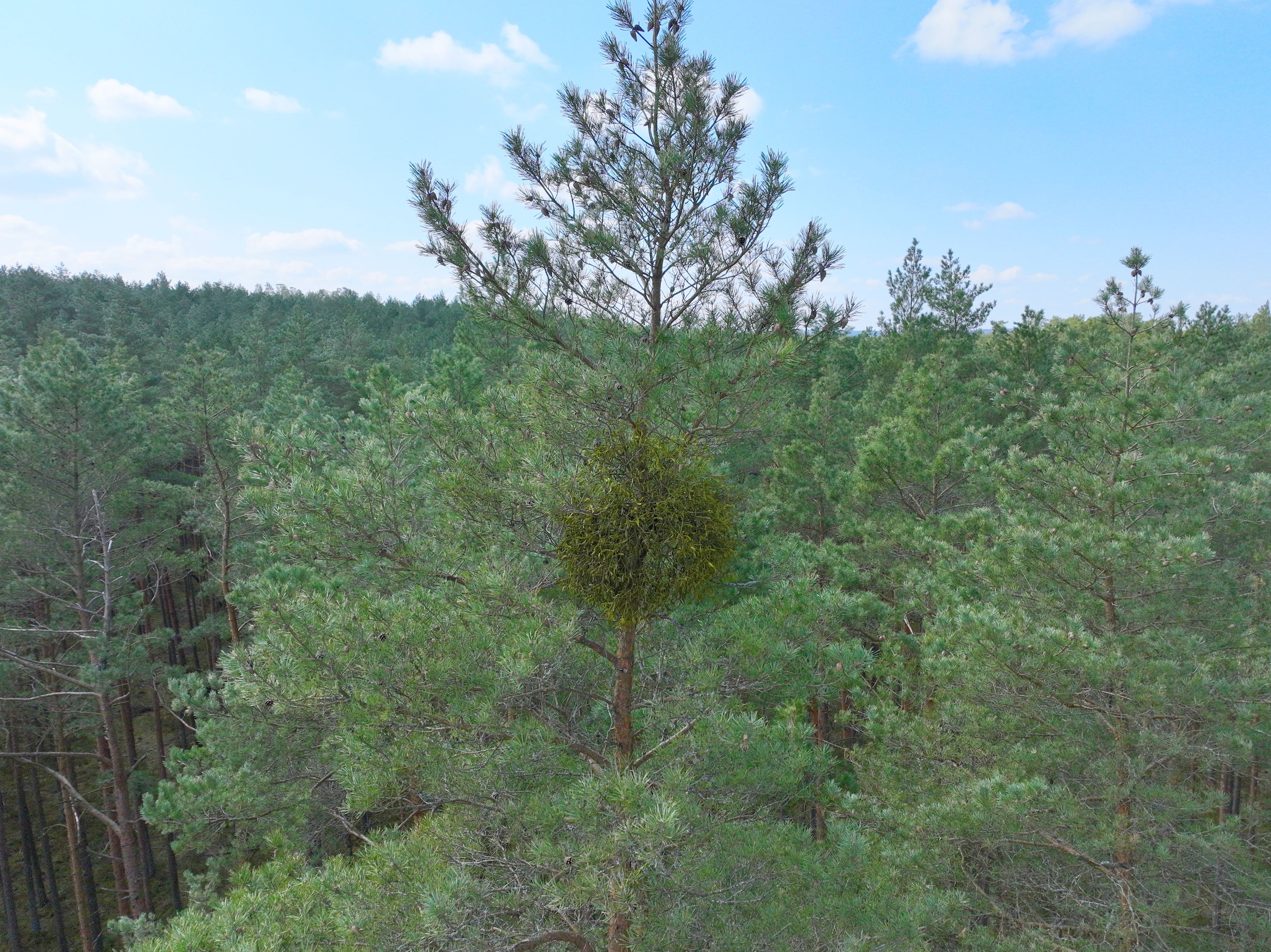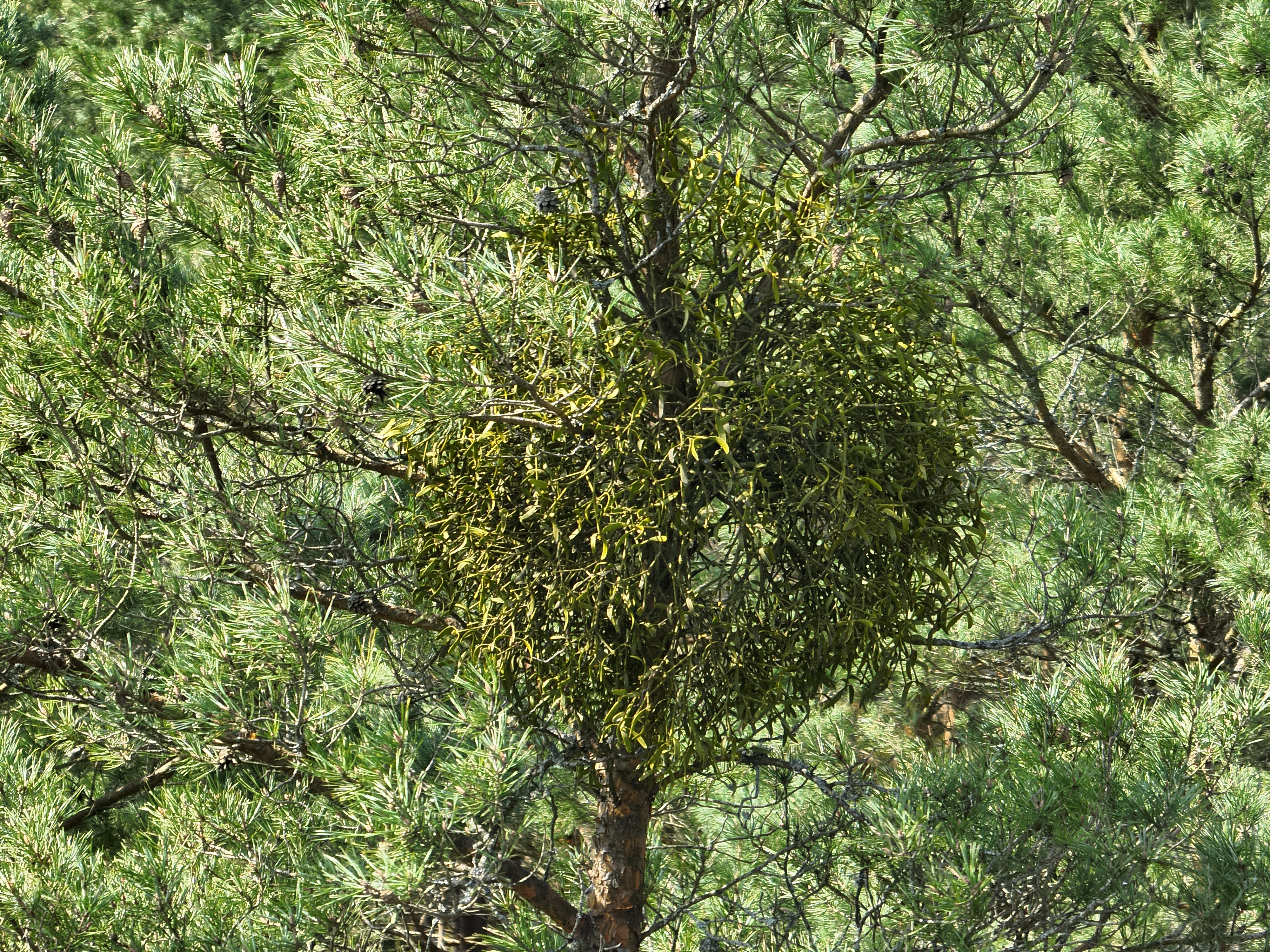Section outline
-
A tree infected by mistletoe is detectable at first sight by mostly globose perennial evergreen shrub which may reach up to 1.5 m with dichasial branching pattern. Leaves are opposite, sessile, obovate-oblong, obtuse, leathery, yellowish-green, with almost parallel veins, ca. 2 - 8 cm long and up to 4.3 cm wide, varying in size, depending on the subspecies (Zuber 2004). V. album is dioecious plant and reproduces sexually. The flowers are small (a diameter of 2-3 mm), sessile and yellowish-green, formed usually in triads with one terminal and two lateral flowers. Mistletoe blooms in March-April, around the age of 5 (Tubeuf 1923; Wangerin 1937). Three, usually white or sometimes slightly yellow, fruits called “pseudoberries” are formed in a crotch on a shoot apex from the previous year. The fruits are 6 – 10 mm in diameter, globose or pyriform, but in some species egg-shaped. The inner mass of the fruits (mesocarp) consists of mucilaginous substance (viscin) in two layers. The outer cellulosic layer is digestable, while the inner one containing pectin is not. In the centre of the fruit there are 1 - 4 “seeds” (chlorophyllous embryos enclosed in thin endocarps) (Zuber 2004).

Viscum album ssp. austriacum bushes in the crown of Scots pine (Pinus sylvestris L.) in the north east Poland (made available by Sławno Forest -District)
Branches and stems infected by V. album are penetrated by haustoria and cortical strands. Haustoria rapidly grow to reach cambium to absorb water and mineral salts, embedded in host xylem tissue. Cortical strands grow through parenchymatous and phloem tissue to provide the lateral spread of the parasite (Zuber 2004).
The maximum age of mistletoe is about 27-30 years (Wangerin 1937; Nierhaus-Wunderwald and Lawrenz 1997).

Viscum album ssp. austriacum bushes in the crown of Scots pine (Pinus sylvestris L.) in the north east Poland (made available by Sławno Forest -District)